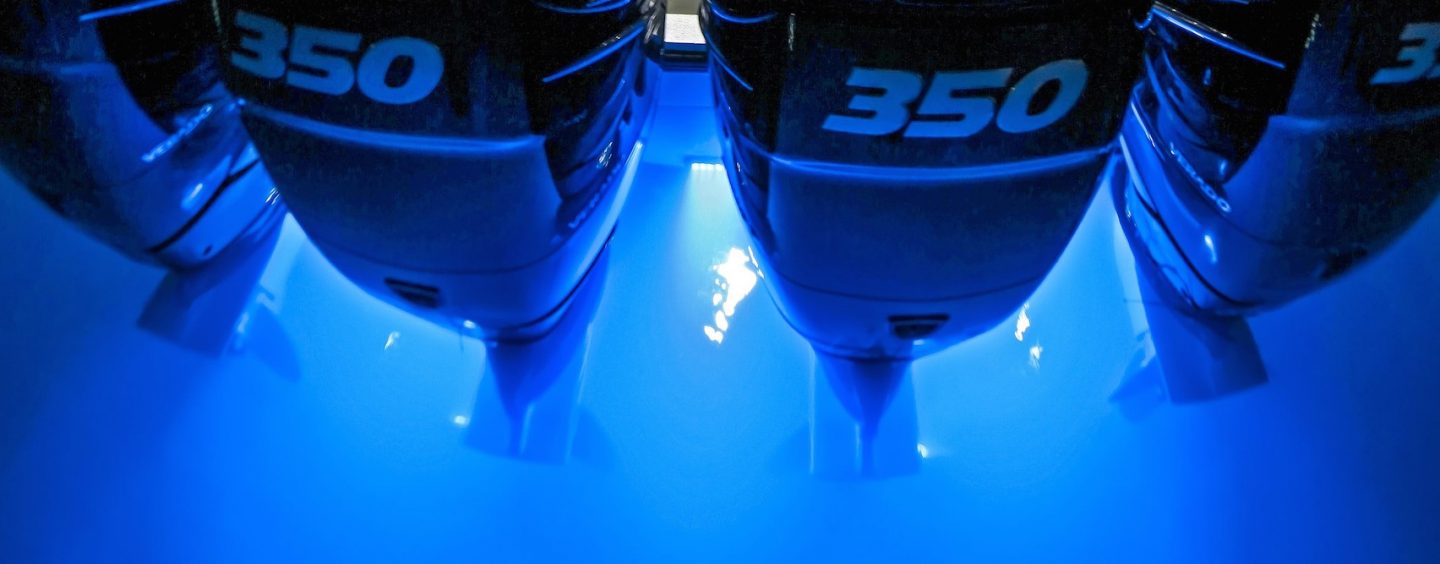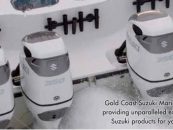There’s nothing quite like the right light to set the mood for the night ahead. Whether you’re intent on fishing, hosting festivities, a bit of romance, or simply showing some nautical style, LED technology ensures today’s marine lighting options are endless.
Errol Cain from Australian Marine Wholesale has been at the forefront of boating technology for almost 35 years, and says the advent of LED lighting has made a massive impact.
Errol reflects on the evolution of LED, and explains how it can enhance your pleasure and leisure time out on the water. “The first LEDs were red, and they got their start as indicator lights for circuit boards and small electrical equipment for this very reason,” he says. “But it didn’t take long for the possibilities of utilising them for boating to be realised.”
Errol says the mixture used in the first LEDs produced a natural red colour. Today, new processes make it possible to deliver an endless variety of colours. “One of the major stages of development in LED history were high-brightness LEDs,” he explains. “As LEDs continued to be developed, the light levels increased to the extent that they could be considered for applications outside simple indicator lamps. In fact, by 1987, they were bright enough for the first applications within the automotive industry, where red LEDs were used for vehicle brake lights and traffic lights. Here, LEDs were of particular interest, because they offered increased reliability over the incandescent lights that had been previously used.”
Errol says second-generation LED technology included the ability to string multiple LEDs into a single circuit. Over time, LEDs became more suitable for outdoor use. “Widespread adoption by municipalities followed, as the LEDs provided a superior alternative to incandescent bulbs in traffic lights,” says Errol. “LEDs also saw limited success as a replacement for fluorescent bulbs and neon in lighted signs.”
In 1993, Shuji Nakamura achieved a breakthrough in doping (the name for the process by which manufacturers introduce impurities in an LED to change its colour properties). Errol says this led to bright blue LEDs. “Blue LEDs with yellow phosphor coatings gave us the white LED and a whole host of new applications.” As LEDs grew brighter, the flashlight industry switched to LEDs from incandescent lights. The new flashlights used less power, and the bulbs never had to be replaced. Now, says Errol, it’s difficult to find a flashlight without LED bulbs.
This brings us to underwater lighting for boats today. “One of the very first companies to manufacture LED underwater lights for boats was Aqualuma LED Lighting based right here on the Gold Coast,” says Errol. “Founded in 2005 with the Generation 1, Series 3 underwater LED, housed in a bullet-proof, polycarbonate housing. I can still remember the launch of their first underwater light at the Sydney Boat Show where Grant Amor demonstrated the toughness of the light with a hammer.”
Today, Aqualuma is on to Generation 4 of underwater lighting with the Series 6, FF9, 12 and 18 products. The following will show the percentage of increase per generation as time has passed since 2005.
GEN1 – GEN2 100% Increase in lux output
GEN2 – GEN3 75% Increase in lux output
GEN3 – GEN4 55% Increase in lux output
“I’m sure that Generation 5 won’t be far away with the speed of today’s technology advancements,” says Errol.
Another major player in the LED field is Lumitec. “Since its founding in 2007, Lumitec has gone from a small start-up to a market-leading multinational LED lighting manufacturer,” says Errol. “Lumitec is an extreme environmental lighting company that offers solutions from leisure marine solutions through to commercial and 1st responder lighting solutions. They are also one of the first LED underwater light manufacturers, starting with the SeaBlaze2 and following with SeaBlaze3. SeaBlaze have just released the 6000-lumen, very bright SeaBlazeX2, which is available in white/blue combo or RGB full-colour change.”
Lumitec also offers smaller vessel underwater lights as well as dock lights. The underwater lights are the SeaBlaze Mini, Zambezi mini, Zambezi Quattro, SeaBlaze Quattro. The underwater dock light system is the Mantis kit, which consists of three lights and a control box in full-colour change.
Errol concludes, “With a dynamic range of light systems available, there is an LED for every purpose.”
www.amwholesale.com.au






























